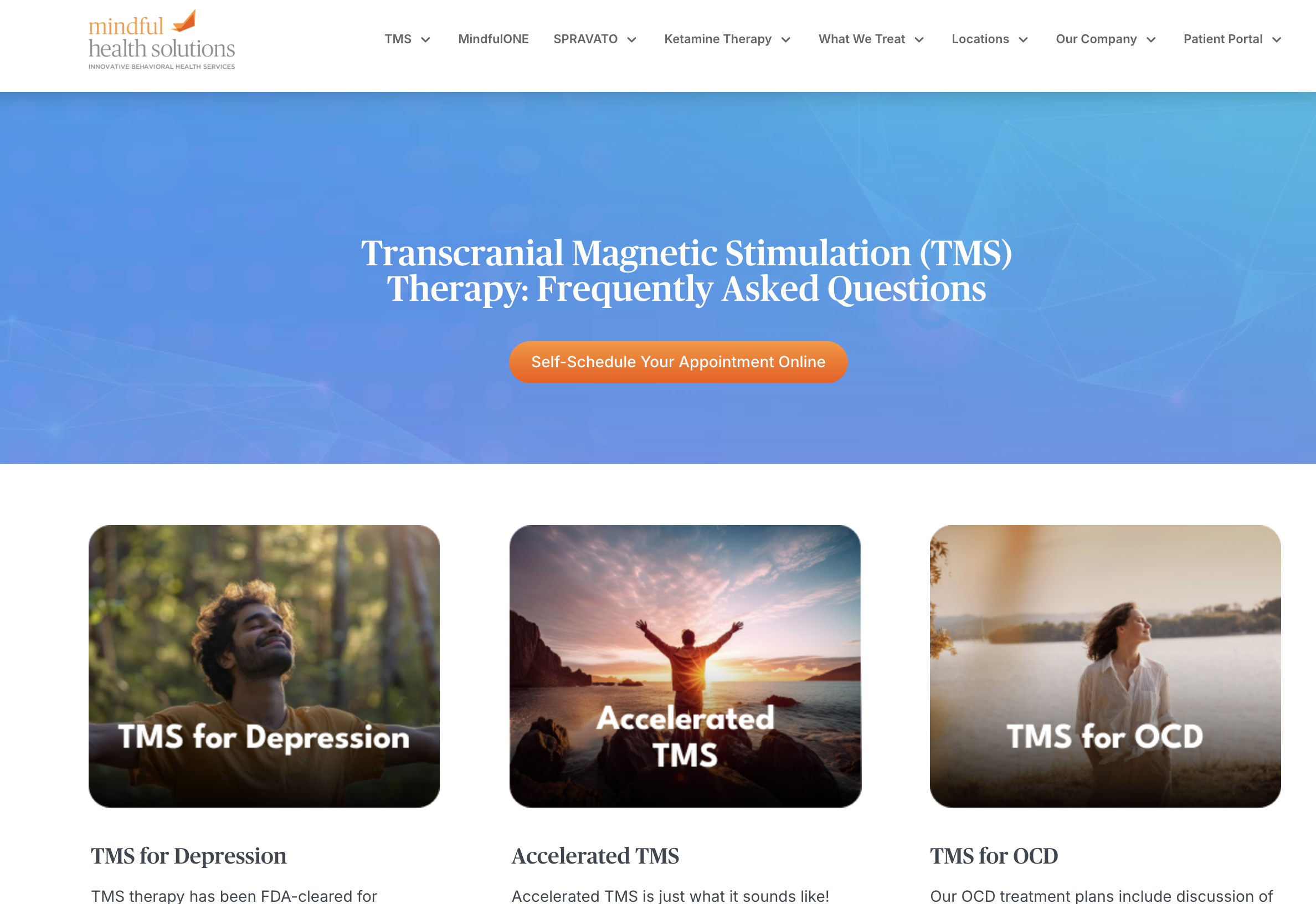Complex Regional Pain Syndrome (CRPS) is a perplexing condition that affects many, characterized by severe, chronic pain that usually impacts a limb after injury or surgery. Traditional treatments often fall short of providing relief, highlighting a need for innovative approaches. Transcranial Magnetic Stimulation (TMS) therapy emerges as a beacon of hope, promising a novel way to manage the relentless pain associated with CRPS. This blog delves into how TMS therapy might offer a new lease on life for those battling this debilitating condition.
Understanding CRPS
CRPS is a chronic condition often triggered by a significant injury, resulting in prolonged pain that is disproportionate to the initial cause. It is categorized into two types:
- Type I: Without nerve injury.
- Type II: With confirmed nerve damage.
Symptoms can vary but typically include:
- Intense pain
- Swelling
- Changes in skin color
- Temperature at the affected site
These manifestations are not only physically taxing but also emotionally draining, significantly impacting the person’s quality of life.
The exact mechanisms behind CRPS remain mysterious, making it a challenging condition to treat. Standard treatments range from physical therapy to medication, aiming to alleviate symptoms rather than address the root cause. Unfortunately, many patients find these methods insufficient, enduring persistent pain that hampers daily activities and overall well-being.
Given the complexity of CRPS, there’s a growing consensus that conventional therapies need to be complemented with more innovative approaches. This is where TMS therapy, a non-invasive brain stimulation technique, shows potential, offering a ray of hope to those who have felt cornered by their condition.
Overview of TMS Therapy
Transcranial Magnetic Stimulation (TMS) is a groundbreaking therapy that uses magnetic fields to stimulate nerve cells in the brain, targeting areas involved in mood regulation and pain perception. The procedure is non-invasive, with a magnetic coil placed against the scalp to deliver brief magnetic pulses. Originally developed to treat depression, TMS has gained attention for its potential in treating chronic pain conditions, including CRPS.
The process of TMS therapy involves repeated sessions, typically over four to six weeks. Each session lasts approximately 15-20 minutes, during which patients may experience a tapping sensation on their scalp but can remain awake and alert throughout. The treatment is generally well-tolerated, with minimal side effects, making it an appealing option for those seeking alternatives to medication or invasive procedures.
TMS therapy has received FDA approval for treating major depression, paving the way for its exploration in other areas like chronic pain management. The safety profile of TMS, coupled with its non-invasive nature, positions it as a promising adjunct or alternative to traditional CRPS treatments.
The Promise of TMS Therapy for CRPS
The intersection of TMS therapy and CRPS treatment represents a frontier in the management of chronic pain, bringing potential breakthroughs for those burdened by this condition. Research into TMS therapy’s effectiveness for CRPS is ongoing, but preliminary findings offer compelling evidence of its capacity to alleviate pain where traditional treatments have not succeeded.
Clinical Trials and Studies
Clinical trials and studies on TMS therapy highlight its ability to adjust pain pathways in the brain, providing a direct root in which it can address the neural aspects of CRPS pain. For instance, studies have shown that repetitive TMS (rTMS) can induce long-lasting changes in pain perception by altering neuronal activity in areas of the brain associated with pain processing. This adjustment can lead to significant reductions in pain intensity, offering CRPS patients much-needed relief from their symptoms.
Success Stories
Success stories from CRPS patients who have undergone TMS therapy provide anecdotal yet powerful testimony to its potential benefits. Many report a noticeable decrease in pain levels, an increase in mobility, and an overall improvement in quality of life following a course of TMS treatment. While individual results can vary, these stories underscore the transformative impact TMS therapy can have, fostering a renewed sense of hope for those who have struggled to find relief through conventional means.
The Promise
Furthermore, the promise of TMS therapy for CRPS extends beyond immediate pain relief. By targeting the neurological underpinnings of chronic pain, TMS offers a novel approach that complements physical and pharmacological treatments. This synergy could redefine CRPS management, shifting the paradigm from merely managing symptoms to actively modulating the disease’s impact on the nervous system.
In conclusion, TMS therapy holds significant promise for CRPS patients, offering a new avenue for treatment that is both innovative and rooted in scientific research. As we continue to explore and understand the full potential of TMS therapy, it stands as a source of hope for those seeking to break free from the cycle of chronic pain and reclaim their lives. Ongoing research will further clarify the role of TMS in CRPS treatment, potentially establishing it as a cornerstone of comprehensive pain management strategies.
Discover how TMS can help with other chronic pain conditions.
Practical Considerations and Accessibility
Beginning TMS therapy requires a commitment to multiple sessions over several weeks, which can be a consideration for patients balancing treatment with daily responsibilities. However, the outpatient nature of TMS therapy means there’s no downtime, allowing patients to return to their routine immediately after each session. Side effects are generally mild and may include scalp discomfort or headache during and shortly after treatment, which typically diminishes throughout the treatment course and can be helped with over-the-counter pain medications.
Accessibility to TMS therapy is improving as awareness grows and insurance coverage expands. Many insurance plans now recognize TMS therapy for depression, and as evidence mounts for its efficacy in treating CRPS, it is hoped that coverage will broaden. Patients interested in TMS should consult with their healthcare providers for the most current information on insurance eligibility and treatment availability.
Approaching a healthcare provider about TMS therapy begins with a conversation about current treatment challenges and exploring all available options. Given the non-invasive nature and positive safety profile of TMS, it represents a viable option for many CRPS patients, especially those who have not found relief through traditional means.
Interested in a consultation?
Call Mindful Health Solutions today at (844) 867-8444
Complementary Strategies for Managing CRPS
While TMS therapy shows promise in managing CRPS pain, adopting a holistic treatment approach can further enhance quality of life. Complementary strategies such as physical therapy, psychotherapy, and lifestyle modifications can work alongside TMS to address the multifaceted nature of CRPS. Physical therapy helps maintain mobility and function, while psychotherapy can address the emotional toll of living with chronic pain. Meanwhile, lifestyle changes, including diet and exercise modifications, can support overall health and well-being.
Integrating TMS therapy with these strategies creates a comprehensive treatment plan tailored to individual needs. This multidisciplinary approach fosters an environment where physical and emotional aspects of CRPS are addressed, optimizing the chances for improvement and potentially transforming the lives of those affected by this challenging condition.
CRPS presents a significant challenge to those it affects, often leading to a long and difficult search for relief. TMS therapy emerges as a promising option, offering a new path forward for managing chronic pain. By exploring innovative treatments like TMS, alongside complementary strategies, there’s hope for improved quality of life for CRPS patients.
If you or a loved one are struggling with CRPS and seeking alternative treatment options, consider consulting with your healthcare provider about the potential of TMS therapy. For more information and support, feel free to call us at (844) 867-8444. Together, we can explore new horizons in pain management and reclaim the joy in everyday life.












































